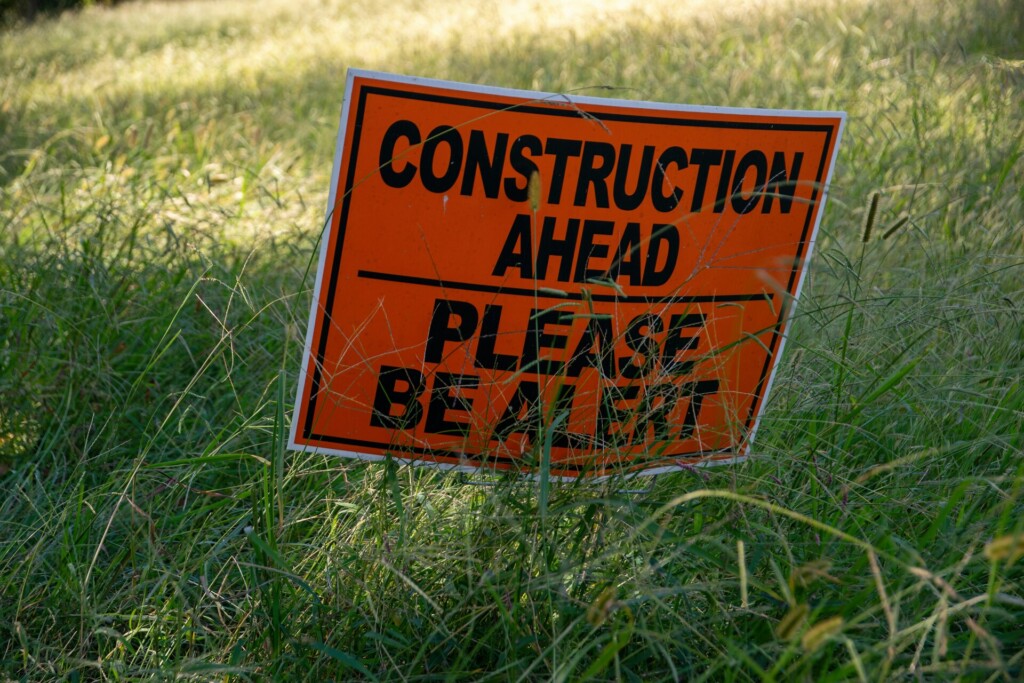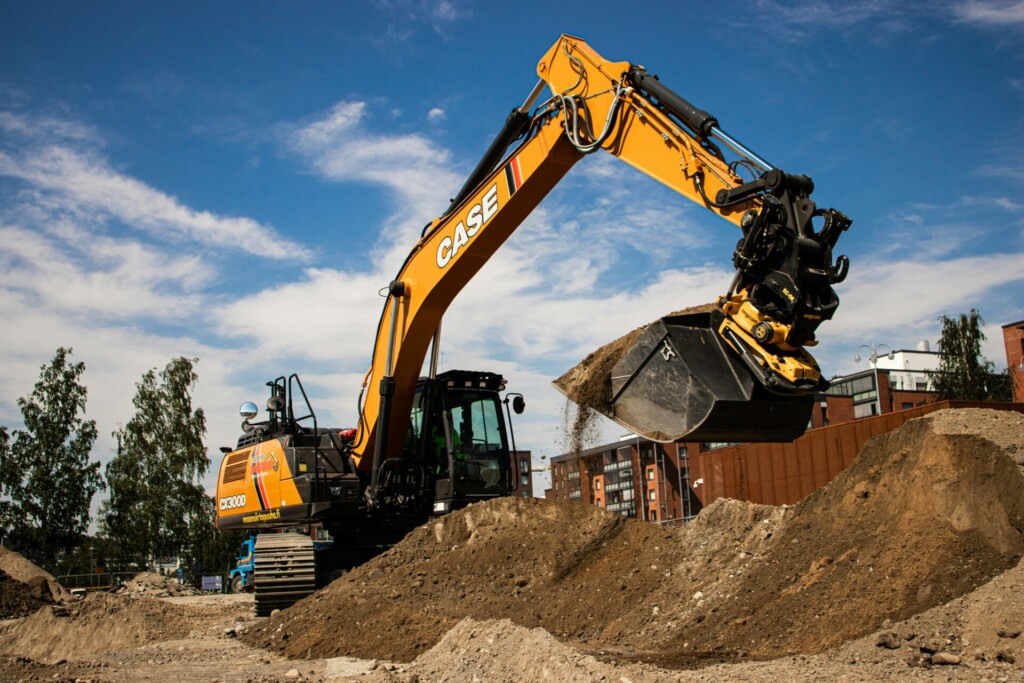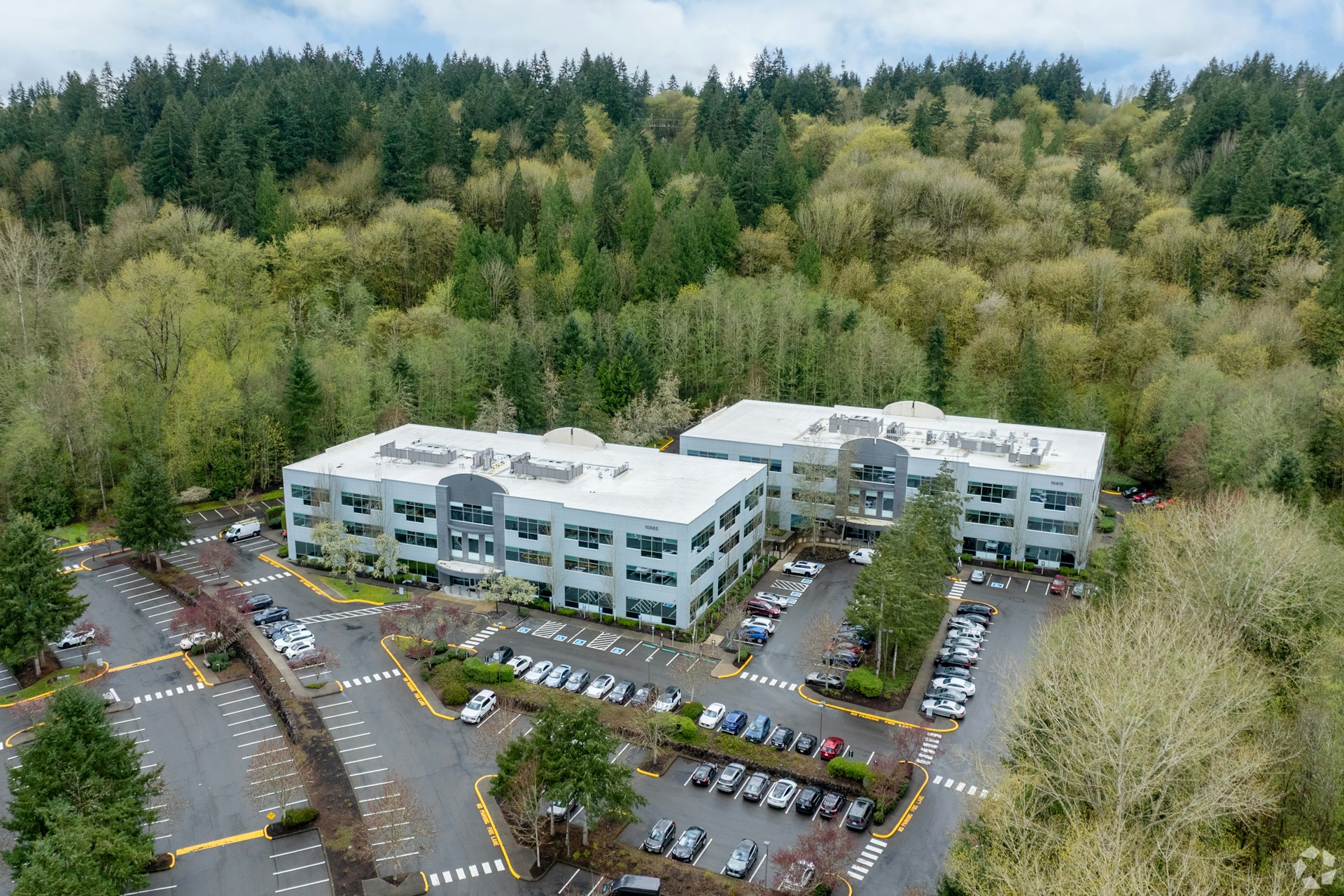On today’s construction sites, proactive environmental management is not just good practice—it’s essential business.
A Construction Environmental Management Plan (CEMP) serves as a comprehensive roadmap for identifying, addressing, and effectively managing the environmental impacts of construction activities. These living documents establish a systematic framework through which we protect sensitive environmental resources and meet compliance obligations.
At EB3 Construction, we develop CEMPs to provide clear guidance and instruction to our project teams responsible for environmental tasks.
More than just paperwork, a well-crafted CEMP outlines specific procedures for monitoring environmental performance, implementing appropriate mitigation measures, and maintaining detailed documentation throughout the project lifecycle. It becomes our environmental playbook—detailing how we’ll control dust, manage waste, protect water resources, and minimize disruptions to surrounding communities.
What Are the Key Components of an Effective CEMP?

Every construction project leaves an environmental footprint. We understand that a well-structured Construction Environmental Management Plan (CEMP) is essential for minimizing these impacts while maintaining compliance with increasingly stringent regulations. Our experience shows that effective CEMPs share several critical components that work together to protect both the project and the surrounding environment.
1. Environmental Assessment and Project Overview
Every CEMP begins with a comprehensive environmental assessment that evaluates the unique characteristics and potential vulnerabilities of the construction site. This foundation allows us to identify specific environmental risks before breaking ground, whether they involve soil conditions, proximity to water bodies, or the presence of sensitive ecosystems.
The project description follows, outlining the scope, timeline, and specific construction activities that will occur. This context is crucial—it ensures that everyone from project managers to subcontractors understands not just what we’re building, but the environmental context in which we’re operating.
2. Clear Roles and Communication Structure
A CEMP without clear accountability is merely a document gathering dust. We establish detailed responsibilities for each team member involved in environmental management, from site supervisors to specialized environmental personnel. This includes defining who monitors what, who reports to whom, and who has authority to implement corrective actions when needed.
The communication framework within our CEMPs establishes protocols for daily pre-start meetings, toolbox talks, progress meetings, and emergency communications. This structure ensures environmental concerns are consistently discussed and addressed throughout the project lifecycle rather than treated as an afterthought.
3. Comprehensive Mitigation Strategies
Mitigation strategies form the practical core of any effective CEMP. We develop specific, actionable approaches for each identified environmental impact, including:
- Soil erosion and sediment control measures using silt fences, sediment basins, and stormwater management systems
- Noise pollution management through equipment selection, work scheduling, and implementation of sound barriers
- Dust control techniques such as water spraying, covered loads, and wind barriers during dry conditions
- Water quality protection with runoff controls, proper chemical storage, and dewatering protocols
- Waste management procedures focusing on reduction, reuse, recycling, and proper disposal
Each of these strategies includes specific methodologies tailored to the project site conditions and regulatory requirements. By addressing these impacts proactively, we prevent environmental damage rather than scramble to correct it after the fact.
4. Monitoring and Reporting Framework
Continuous monitoring forms the feedback loop that keeps environmental management on track. Our CEMPs include detailed monitoring procedures for air quality, water quality, noise levels, and other relevant parameters. We establish baseline conditions, set action triggers, and implement regular testing schedules to detect problems before they escalate.
The reporting framework then establishes how monitoring data is documented, analyzed, and communicated. This typically includes daily inspection logs, weekly summaries, incident reports, and formal submissions to regulatory authorities when required. This documentation not only demonstrates compliance but provides the data needed to continuously improve environmental performance.
| Parameter | Action Level |
| Combustible Atmosphere | LEL greater than 10% |
| Oxygen Level | Below 19.5% or above 23.5% |
| Lead | 15 parts per billion (ppb) |
| Copper | 1.3 mg/L |
5. Emergency Response and Incident Management
Despite thorough planning, environmental incidents can still occur. Effective CEMPs include comprehensive emergency response procedures for various scenarios—chemical spills, unexpected contamination discoveries, severe weather events, and other potential environmental emergencies.
We outline specific step-by-step response protocols, clearly assign emergency roles, identify required equipment and resources, and establish notification procedures for both internal management and regulatory authorities. This preparation ensures our teams can respond swiftly and effectively to minimize environmental damage when incidents occur.
6. Training Requirements and Competency Management
Environmental protocols are only effective when properly implemented by a well-trained team. Our CEMPs specify required training for all project personnel, from basic environmental awareness for general workers to specialized certification for those handling hazardous materials or conducting environmental monitoring.
We maintain training records, verify competencies, and schedule regular refresher sessions to ensure all team members remain current with environmental requirements and best practices. This investment in personnel capabilities directly translates to better environmental outcomes on our construction sites.
Compliance Framework and Regulatory Navigation
The regulatory landscape for construction projects continues to grow more complex. Our CEMPs include a comprehensive compliance framework that identifies all applicable environmental regulations, permit requirements, and approval conditions relevant to the specific project.
We map these requirements against project activities, establish verification procedures, and maintain a compliance register that tracks fulfillment of obligations throughout the project lifecycle. This systematic approach helps navigate the regulatory maze while minimizing compliance risks and potential delays.
How Do CEMPs Address Environmental Impact Management?

When we implement Construction Environmental Management Plans (CEMPs), we create structured frameworks that translate compliance requirements into actionable on-site protocols. These plans serve as our roadmap for minimizing our environmental footprint while maintaining construction efficiency.
Comprehensive Mitigation Strategies
Our CEMPs address specific environmental challenges through tailored action plans for each project phase. We identify potential impacts early—from pre-construction assessments to project completion—and implement practical controls that balance regulatory compliance with construction realities.
For earthwork operations, we deploy targeted dust suppression measures like water trucks during dry conditions, install wheel wash stations at site exits, and establish protocols for covering stockpiles. These measures significantly reduce particulate matter release and protect both on-site workers and neighboring properties.
When managing noise pollution, we schedule high-decibel activities during approved hours, use noise barriers around stationary equipment, and select the quietest machinery available. For projects in noise-sensitive areas, we may implement real-time noise monitoring to ensure our mitigation measures remain effective.
Waste Management and Resource Efficiency
Our waste management protocols transform potential environmental liabilities into opportunities for resource efficiency. We implement waste segregation systems that separate materials at the source, enabling higher recycling rates and reducing landfill contributions. On larger projects, we often achieve diversion rates exceeding 75% through careful planning and staff training.
Material handling receives similar attention in our CEMPs. We establish designated storage areas for hazardous materials with appropriate containment systems, maintain comprehensive inventories, and train personnel in spill response procedures. This approach prevents soil and water contamination while ensuring compliance with hazardous material handling requirements.
For fuels and chemical storage, we implement double containment systems, conduct regular inspections, and maintain spill kits at strategic locations throughout the site. These measures significantly reduce the risk of environmental incidents while enhancing our response capabilities should an issue arise.
| Environmental Impact | Mitigation Measures |
|---|---|
| Air Pollution | Use of eco-friendly building materials, dust control techniques, and air quality monitoring |
| Water Pollution | Runoff controls, proper chemical storage, dewatering protocols |
| Noise Pollution | Equipment selection, work scheduling, sound barriers |
| Waste Generation | Reduction, reuse, recycling, and proper disposal |
| Carbon Emissions | Sustainable site planning and design, use of renewable energy sources |
Monitoring and Continuous Improvement
Environmental impact management doesn’t stop with implementation. We employ systematic monitoring programs that track key performance indicators throughout construction. Air quality, water discharge parameters, and noise levels are regularly recorded and compared against baseline measurements and compliance thresholds.
This data-driven approach allows us to verify compliance, demonstrate due diligence to authorities, and make informed adjustments when conditions change. When unexpected environmental challenges emerge—as they inevitably do on complex projects—we have the monitoring infrastructure to identify, evaluate, and address them promptly.
Each CEMP we develop assigns clear responsibilities to specific team members, references applicable legislation and standards, and includes detailed implementation methodologies. This accountability structure ensures that environmental protection measures aren’t just documented—they’re consistently executed throughout the project lifecycle.
What Monitoring and Compliance Systems Should Be Included?
Environmental monitoring is the backbone of any Construction Environmental Management Plan. We implement comprehensive monitoring networks that track all critical environmental parameters throughout the project lifecycle. Our systems go beyond simple compliance—they provide real-time insights to help prevent issues before they escalate.
Establishing Actionable Thresholds
Effective environmental monitoring begins with clearly defined thresholds. We establish both action and limit levels for each environmental parameter based on regulatory requirements and site-specific conditions. These dual thresholds create a proactive system: action levels trigger investigation and preventive measures, while limit levels require immediate corrective responses.
When developing these thresholds, our environmental teams consider not just regulatory minimums but also project context, community concerns, and client sustainability goals. This layered approach ensures we address both compliance requirements and stakeholder expectations throughout the construction process.
For each identified threshold, we implement corresponding event and action plans that detail specific steps, responsibilities, and timelines. This structured response system eliminates guesswork when exceedances occur.
Deployment of Monitoring Technologies
Modern environmental monitoring demands specialized equipment tailored to each environmental parameter. We deploy continuous particulate monitors around site perimeters to track dust and PM10 levels in real-time, especially crucial for urban projects or those near sensitive receptors.
For noise management, we utilize calibrated sound level meters at strategic locations to track construction noise against established thresholds. These systems often incorporate automatic alerts when levels approach action thresholds, allowing our site teams to adjust operations before violations occur.
Our waste management tracking incorporates digital documentation systems rather than traditional paper logs. These platforms allow us to monitor waste streams, track diversion rates, and ensure proper documentation from generation through disposal.
Inspection and Auditing Protocols
Regular site inspections are a critical component of our monitoring program. We conduct daily visual inspections of erosion controls, dust suppression measures, and waste containment areas. These frequent checks allow us to identify and address minor issues before they become significant problems.
Beyond routine inspections, we implement formal environmental audits on a scheduled basis. These comprehensive reviews evaluate all aspects of CEMP implementation, from documentation completeness to field compliance. Our audit protocols typically incorporate both internal reviews and third-party verification for maximum objectivity.
Each audit generates detailed reports highlighting both conformances and any identified gaps. We use these findings to refine our environmental management approach, creating a continuous improvement cycle throughout the project.
Documentation and Reporting Systems
Effective monitoring requires robust documentation systems. We maintain centralized environmental data repositories that compile all monitoring results, inspection reports, and compliance documentation. These systems provide complete traceability and support both internal management and regulatory reporting requirements.
Regular environmental performance reports synthesize monitoring data into actionable insights. These reports include trend analyses that help identify potential issues before threshold exceedances occur. When developing reporting systems, we ensure formats align with both regulatory requirements and client expectations.
Our documentation approach incorporates non-conformance management protocols that track all environmental incidents from identification through resolution. These systems ensure corrective actions are implemented and verified, creating accountability throughout the construction process.
Community Feedback Integration
Environmental monitoring extends beyond technical measurements to include community perception. We implement formal complaint handling procedures that document, investigate, and respond to all environmental concerns raised by project neighbors or other stakeholders.
Each complaint triggers an investigation protocol that includes verification monitoring when appropriate. We track resolution timelines and maintain communication with complainants throughout the process. This transparent approach helps maintain positive community relationships even when challenges arise.
By integrating community feedback into our monitoring systems, we gain valuable insights that sometimes identify issues before they register on technical equipment. This human-centered approach complements our technical monitoring for comprehensive environmental oversight.
How to Implement Training and Communication in a CEMP?

Effective deployment of a Construction Environmental Management Plan relies on two critical pillars: comprehensive training and strategic communication. These elements often determine whether environmental controls remain theoretical or translate into meaningful site practices. Our approach integrates both components to ensure environmental compliance becomes second nature throughout project delivery.
Building a Robust Environmental Training Framework
We establish multi-layered training programs that adapt to project complexity and site-specific risks. Everyone who steps onto our construction sites receives targeted environmental education aligned with their role and responsibilities.
Site inductions form the foundation of our environmental training strategy. We ensure all workers and contractors understand the site’s environmental context, including nearby sensitive areas, protected vegetation, or water bodies requiring specific protection measures. Each induction covers the practical application of the CEMP, clearly defining individual responsibilities and outlining procedures for reporting environmental incidents.
For specialized environmental roles, we implement dedicated training modules. Our Environmental Protection Officers receive in-depth instruction on regulatory requirements, monitoring protocols, and emergency response procedures. This specialized training equips them to provide expert guidance during critical environmental decision points throughout construction.
Regular toolbox talks maintain environmental awareness as projects progress. These brief, focused sessions address timely environmental topics—stormwater management before predicted rain events, dust control during dry periods, or noise mitigation when working near residential areas. Frequent, contextual reminders significantly outperform one-time comprehensive training in driving consistent environmental performance.
Creating Effective Communication Channels
Clear communication pathways strengthen every aspect of CEMP implementation. We establish structured systems that facilitate information flow between project teams, regulatory authorities, and the surrounding community.
For internal teams, we implement tiered reporting lines with clearly designated environmental responsibilities. Site supervisors know exactly when and how to escalate environmental concerns, while management receives regular performance metrics against established environmental targets. This accountability structure ensures environmental issues receive appropriate attention and resources.
Communication with external stakeholders requires thoughtful planning and consistent execution. We develop stakeholder engagement strategies that identify affected parties and outline appropriate communication methods for each group. For neighboring residents and businesses, this includes advance notifications of potentially disruptive activities, regular community updates, and accessible channels for submitting inquiries or concerns.
Our complaint management systems provide defined processes for receiving, documenting, investigating, and resolving environmental concerns. Each complaint is logged with contact details, the nature of the issue, immediate actions taken, and verification that the concern was adequately addressed. This systematic approach not only resolves individual issues but generates valuable feedback for improving environmental controls.
Practical Tools for Environmental Communication
Visual communication tools significantly enhance environmental awareness across construction sites. We implement environmental risk mapping in high-traffic areas like site offices and lunch rooms, using color-coding to clearly identify sensitive areas requiring specific management protocols.
Digital platforms increasingly supplement traditional communication methods, allowing real-time environmental monitoring data to be shared between field teams and project management. Mobile applications enable instant reporting of environmental issues, complete with geo-tagged photos that provide crucial context for rapid response.
Regular environmental coordination meetings bring together key project personnel to review monitoring results, discuss upcoming activities with environmental implications, and coordinate responses to any issues identified. These sessions maintain environmental priorities throughout the construction sequence, particularly during high-risk activities like bulk earthworks or in-water construction.
We maintain comprehensive documentation of all training and communication activities. These records demonstrate regulatory compliance and provide valuable reference points for evaluating CEMP effectiveness and refining approaches for future projects.
Integrating Training and Communication
The most successful CEMP implementation occurs when training and communication systems work in tandem. Pre-construction workshops introduce the environmental management framework and establish communication expectations before work begins. These sessions build shared understanding among diverse project stakeholders—from executives to equipment operators—regarding environmental priorities and management approaches.
Environmental training materials directly reference communication protocols, ensuring workers understand not only what environmental controls to implement but also how to report issues, suggest improvements, or request clarification. Similarly, our communication strategies incorporate regular refresher training to address any patterns identified through monitoring or complaints.
When implementing a new environmental control measure, we combine practical demonstrations with clear written procedures and visual aids. This multi-channel approach accommodates different learning styles and increases retention of critical environmental information.
Environmental incidents provide valuable teaching opportunities. We document lessons learned from any environmental near-misses or exceedances, incorporating these real-world examples into future training to prevent recurrence. This continuous improvement cycle keeps environmental training current and relevant to actual site challenges.
By investing in comprehensive training and establishing clear communication channels, we create construction environments where environmental protection becomes integrated into daily operations rather than treated as a separate compliance exercise. This approach not only minimizes environmental impacts but often yields operational efficiencies and improved stakeholder relationships throughout the project lifecycle.
Conclusion: Ensuring CEMP Success Throughout the Project Lifecycle
The construction industry’s environmental footprint can be substantial, but the difference between environmental harm and responsible development often comes down to one critical factor—how well we implement and maintain an effective Construction Environmental Management Plan (CEMP). Throughout this discussion, we’ve seen how CEMPs serve as our roadmap for environmental compliance, creating a systematic approach that transforms regulatory requirements and best practices into tangible daily actions on job sites.
What separates exceptional projects from merely compliant ones is treating the CEMP as a living, evolving document rather than a static checklist. In our experience at EB3, the most successful environmental management occurs when we embed continuous improvement processes into our workflow. This involves regular reviews of monitoring data, frequent team discussions about environmental performance, and a willingness to adapt and enhance mitigation measures when site conditions or project phases change. A CEMP that grows and develops alongside the project ensures we’re not just meeting yesterday’s standards but anticipating tomorrow’s challenges.
As stewards of both built and natural environments, our responsibility extends beyond project completion. The environmental systems we establish during construction often serve as the foundation for long-term site management and operations.
Connect with our team at EB3 Construction to discuss how we can help ensure your next project achieves both construction excellence and environmental responsibility throughout its lifecycle.




